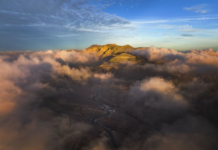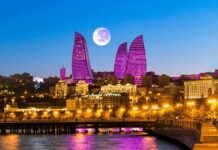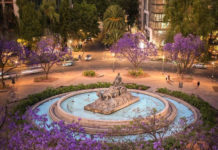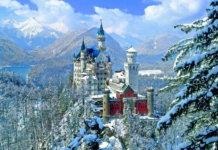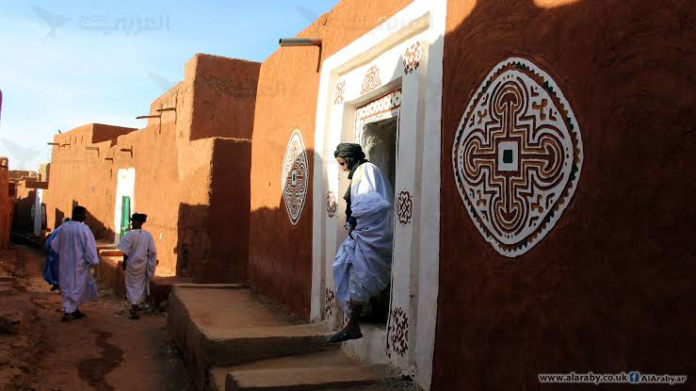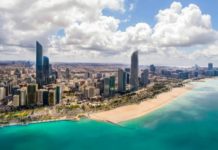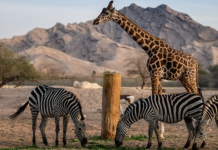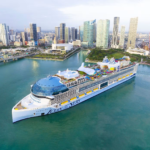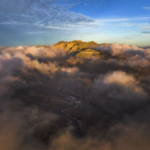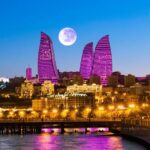Tourism in Mauritania constitutes a unique and interesting experience for those wishing to discover this country, which is considered the connecting point between the Arab world and Black Africa.
It is characterized by the diversity of its landscapes, with its vast desert, mountainous terrain, and picturesque beaches on the coast of the Atlantic Ocean, as well as the valleys and oases that are scattered throughout the Mauritanian desert, parks and nature reserves, and ancient cities, which in the past formed a major stop on the trade caravan route in the Middle Ages.
Mauritania is also distinguished by the diversity of its ethnic components, which have blended over time, creating a mixture of Arab, Berber and African cultures with its rich and diverse cultures.
If you want to visit Mauritania, we present to you 5 of its most important tourist areas that you should discover.
The historic city of Oualata: Gate to the Desert

This city was known in ancient times as the gateway to the desert. It is located in the Hodh El Sharqi Governorate in southeastern Mauritania, 400 kilometers from the ancient city of Timbuktu in Mali.
Valata was founded in the fifth century AD to become one of the most important centers of scientific and religious radiation in the Sahara region.
This city still embraces a rich historical legacy in its unique urban style, which has maintained its distinctive character, which is a mixture of the Andalusian style and the architecture of desert palaces that are steadfast in the face of harsh natural and climatic conditions.
Arken Basin National Park: an earthly paradise

Between the soft golden sand and the calm blue waves of the Atlantic Ocean, this reserve extends over a length of 180 kilometers, on the road linking the two capitals of Mauritania.
With its environmental and natural diversity, it constitutes one of the most important environmental reserves and the largest fisheries in the world.
The Arkin Basin is also considered a natural refuge to which millions of birds migrate annually from Siberia, Northern Europe, and Greenland.
Its moderate climate, waters, and moderate coastal environment provide a suitable place for the growth and reproduction of marine life during the mating seasons, and there are rare types of marine creatures such as dolphins, sea scorpions, yellow mullet, catfish, sea turtles, and others.
Chinguetti City: Horses’ Eyes

Chinguetti means in the Berber language the eyes of horses. The founding of this city dates back to the 11th and 12th centuries. It was a crossroads for Hajj caravans and a center for scientific and knowledge exchange between Africa and the Arab world.
The Chinguetti Mosque is still a living witness to the vital importance of this city, from which the country gained its fame, and Mauritania became known as the land of Chinguetti.
The ancient market of Chinguetti meets the needs of visitors and tourists who are keen to purchase local products, including textiles, carpets, jewelry, and various handicrafts. The city also includes heritage houses furnished with carpets and mats, which have been turned into small hotels, serving delicious local meals, including fresh sheep meat, dates, rice, couscous, and other dishes from this desert region that give visitors a feeling of comfort and tranquility.
Wadan: open-air museum

One of the ancient historical forts, it is located 120 kilometers from the city of Chinguetti, and it constitutes a vital commercial center on the caravan route during the Middle Ages.
The city is distinguished by its own architectural style, and some of its ancient neighborhoods still exist, and part of its wall remains today, while shifting sands buried an important part of the old city.
Gaoling Nature Park: fairy tale magic

On the banks of the Sanhaja River, the Senegal River, which supplies drinking and irrigation water to several African countries, and deep in the fertile agricultural lands at the mouth of the river into the Atlantic Ocean, the Gaoling Natural Park is located in the state of Atrazza on the Mauritanian side of the border with the State of Senegal.
Around the park, waterfalls flow from valleys and lakes, forming water tributaries whose sides are surrounded by plants, grass, trees, and rocky cliffs topped by dunes. The villages of fishermen and farmers are scattered around them, and herds of livestock graze among them.


